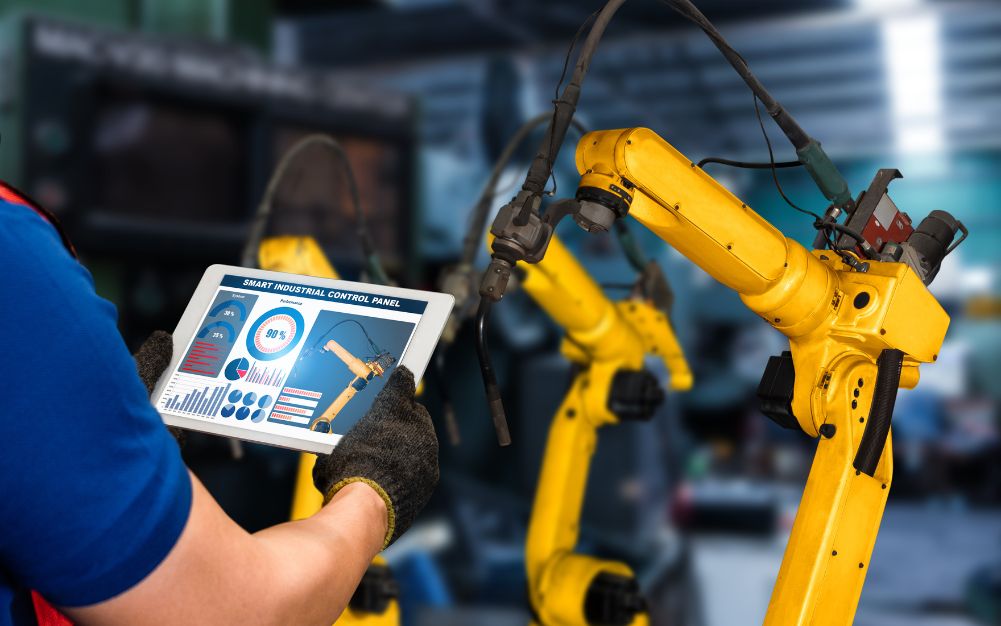A Simple Guide to How Robotic Arms Work in Automation
In the world of automation, robotic arms are often the heart of the operation. They are designed to replicate human actions with precision, speed, and efficiency, making them essential in industries like manufacturing, packaging, and assembly lines. But how do these machines work, and what makes them so effective in automation?
In this guide, we’ll walk you through the basics of how robotic arms work in automation, breaking down their key components, movements, and the benefits they bring to various industries.
What is a Robotic Arm?
A robotic arm is an industrial robot with a mechanical structure that mimics the motion of a human arm. These arms are used in a variety of tasks, such as picking, placing, welding, painting, sorting, and assembly. Robotic arms help increase production speed, accuracy, and safety, which are crucial in today’s fast-paced industrial environments.

Key Components of a Robotic Arm
Robotic arms are made up of several key components that work together to enable precise and controlled movement:
Joints and Link- A robotic arm has multiple joints that allow it to move in different directions. These joints are connected by links, which act like the bones in a human arm. The most common types of robotic arm movements include:
- Rotation – Moving around an axis, like turning the wrist.
- Translation – Moving along a straight line, like extending an arm forward.
- Articulation – Combining multiple movements to perform more complex tasks.
Actuators- The actuators are responsible for driving the movement of the joints. There are different types of actuators:
- Electric motors for precise movements.
- Hydraulic actuators for heavy-duty tasks.
- Pneumatic actuators for quick movements with lower force.
These actuators work by converting electrical, hydraulic, or pneumatic energy into mechanical movement.
Sensors- Robotic arms rely on sensors to gather data about their surroundings and provide feedback to the control system. Sensors can detect:
- Position of each joint.
- Force exerted by the arm.
- Vision or object recognition for tasks like picking or quality control.
These sensors ensure the arm moves accurately and responds to changes in real time.
Control System- The control system acts as the brain of the robotic arm. It interprets data from the sensors and sends commands to the actuators to control the arm’s movement. There are two types of control systems:
- Open-loop control – Follows pre-programmed instructions without feedback.
- Closed-loop control – Uses sensor data to adjust movements in real time, ensuring higher accuracy.
Benefits of Robotic Arms in Automation
1. Increased Productivity
Robotic arms can work around the clock without breaks, significantly boosting production output and reducing downtime. They can handle repetitive tasks at high speed, increasing the efficiency of the production process.
2. Improved Precision and Consistency
Unlike human workers, robotic arms do not experience fatigue and can repeat the same task with the same level of accuracy every time. This is especially beneficial in tasks that require high precision, like assembly and quality control.
3. Cost-Effectiveness
Although robotic arms require an initial investment, they can reduce labor costs in the long run by performing tasks faster and without the risk of human error. Additionally, robots can work in hazardous environments, minimizing workplace injuries.
4. Flexibility
Robotic arms can be easily reprogrammed to handle different tasks, making them ideal for high-mix, low-volume production. This flexibility allows manufacturers to adapt quickly to changes in demand or product types.
Applications of Robotic Arms in Automation
Robotic arms are used across various industries for different applications:
- Manufacturing – Welding, painting, and assembly lines.
- Packaging – Picking, packing, and palletizing goods.
- Electronics – Soldering, component placement, and inspection.
- Healthcare – Robotic surgery, prosthetics, and rehabilitation devices.
- Food Processing – Sorting, packaging, and palletizing food products.
Why Choose AT SYSTECH SDN BHD for Robotic Arm Solutions?
At AT SYSTECH SDN BHD, we specialize in providing advanced robotic arm solutions tailored to your specific needs. Whether you’re looking to automate your manufacturing process, improve precision, or optimize efficiency, we have the expertise and technology to help you implement robotic arms that will transform your business.
Ready to Take Your Automation to the Next Level?
If you’re looking to enhance your automation with robotic arms, AT SYSTECH SDN BHD is here to help.
Contact us today to explore how robotic arms can streamline your production and increase your operational efficiency.











